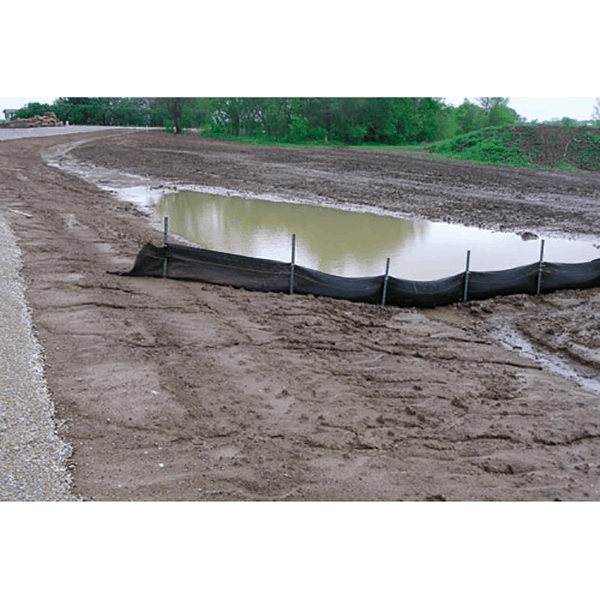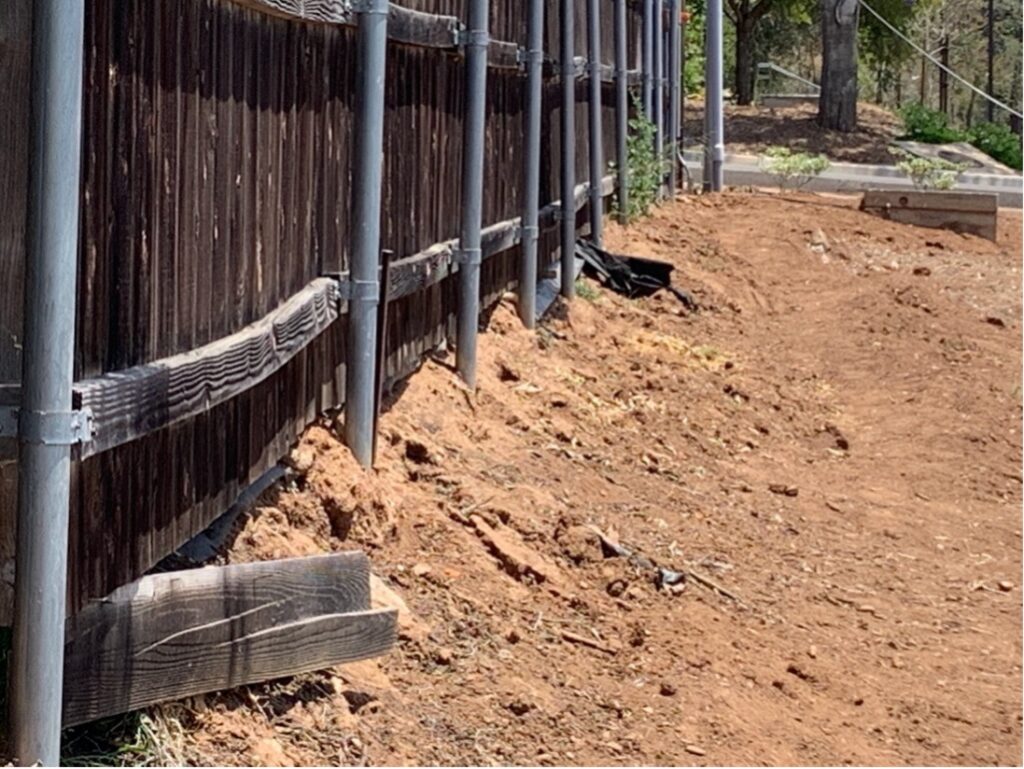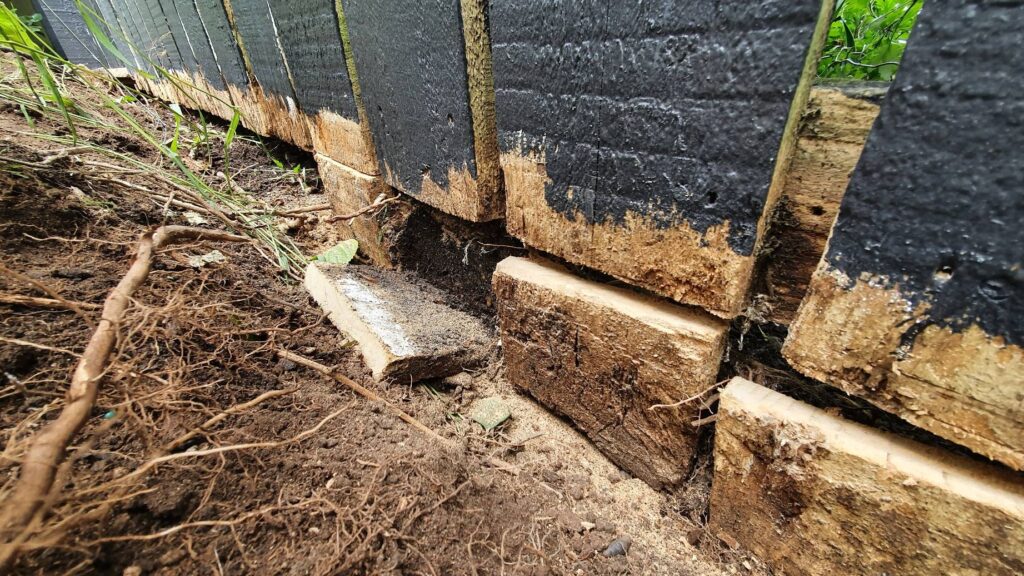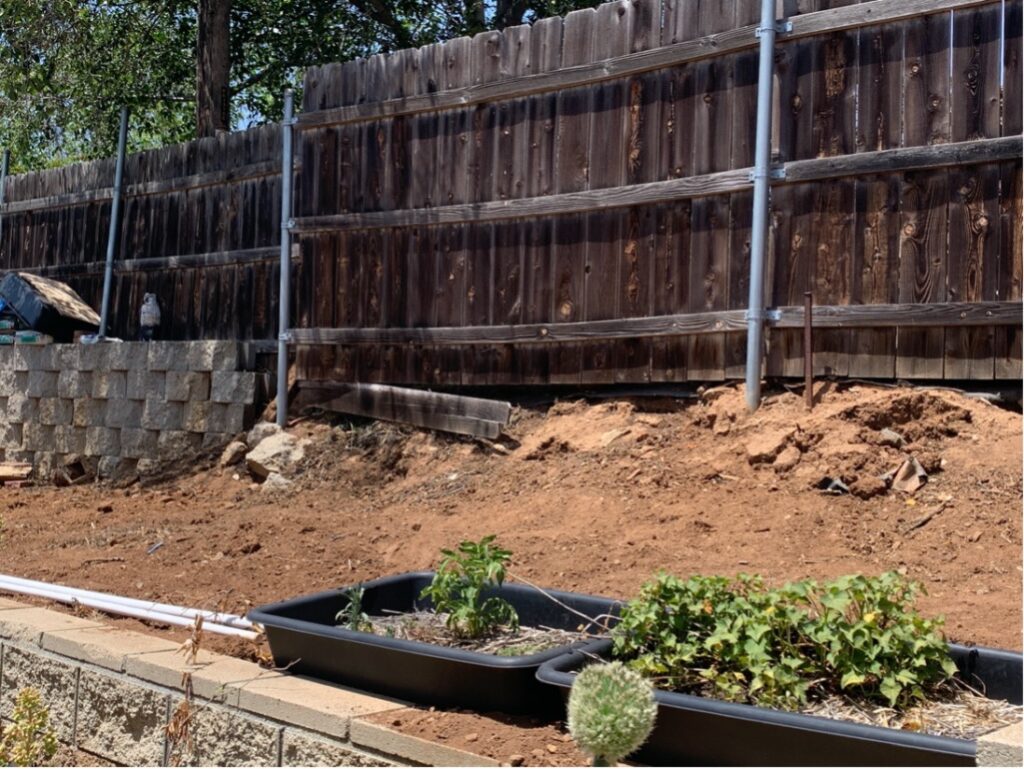Are you concerned about how to maintain your fence in acidic soil? Well, you’re in the right place! In this article, we’re going to explore all the aspects of maintaining a fence in acidic soil, so you can keep your fence sturdy and beautiful for years to come. Whether you’re dealing with a wooden, metal, or vinyl fence, we’ve got you covered. You’ll learn valuable tips and tricks that will help you prevent damage and keep your fence in great condition. So, let’s dive in and discover everything you need to know about maintaining your fence in acidic soil!
One of the first things you’ll learn is the importance of choosing the right materials for a fence in acidic soil. We’ll discuss the pros and cons of various materials, such as pressure-treated wood, stainless steel, and vinyl, and provide you with insights on which one might be the best fit for your specific soil conditions. We’ll also delve into the topic of soil testing and how it can help you determine the level of acidity in your soil. Additionally, we’ll cover the different techniques and products you can use to protect your fence, including sealants, coatings, and regular maintenance routines. By the end of this article, you’ll be equipped with the knowledge and tools to effectively maintain your fence in acidic soil and enjoy its durability and aesthetic appeal for many years to come. Stay tuned for more in-depth information on this topic!
Maintaining Your Fence in Acidic Soil
Maintaining a fence in acidic soil requires careful planning, proper installation, and regular maintenance. Acidic soil can have detrimental effects on the fence materials, leading to deterioration and shorter lifespan. This article provides a comprehensive guide on how to choose the right fence, prepare the ground, install the fence posts, build the fence panels, add gates and gate hardware, apply protective coatings, monitor and repair damage, deal with weed and vegetation growth, manage moisture levels, protect the fence from rust and corrosion, address wildlife and pest control, handle fading and discoloration, and prioritize safety considerations for fence maintenance.

Choosing the Right Fence
Considering the Purpose and Function
When selecting a fence for acidic soil, it’s crucial to consider its purpose and function. Are you looking for privacy, security, or simply enhancing the aesthetics of your property? Determining the primary role of your fence will help you decide on the height, style, and materials that will best suit your needs.
Evaluating Different Materials
Not all fence materials are suitable for acidic soil. Some materials, such as wood, can easily deteriorate and rot in acidic conditions. It’s essential to assess the durability and resistance of various materials, such as vinyl, aluminum, or composite, and choose the one that will withstand the acidic soil’s corrosive properties.
Determining the Height and Privacy Level
The height of your fence depends on your specific requirements for privacy and security. Assess the surroundings and neighboring properties to determine the adequate height that will meet your needs while complying with local regulations. Additionally, considering the privacy level you desire will help you select the appropriate fencing style and design.
Accounting for Aesthetics and Design
The appearance of your fence can greatly enhance the overall design of your property. Take into account the architectural style, color palette, and landscaping elements in your yard when choosing the fence’s aesthetics. Whether you prefer a traditional picket fence or a modern and sleek design, finding a balance between functionality and aesthetics is crucial for a visually appealing fence.
Preparing the Ground
Assessing the Soil pH and Composition
Before installing a fence in acidic soil, it’s essential to assess the soil’s pH and composition. Acidic soil has a pH level below 7, which can pose challenges for certain materials. Use a pH testing kit to determine the soil’s acidity and consider getting professional soil testing to understand the composition and nutrient levels.
Testing Soil Drainage
Proper soil drainage is crucial to prevent waterlogged conditions that can further deteriorate the fence materials. Conduct a drainage test by digging a small hole and filling it with water. If the water drains slowly or remains stagnant, drainage improvements may be necessary before installing the fence.
Amending the Soil for Acidic Conditions
Acidic soil can negatively affect plant health, so it’s important to amend the soil to create a suitable environment for the fence and surrounding vegetation. Lime application can help neutralize acidity over time. Consult with a local agricultural extension office or a soil expert to determine the appropriate amount of lime to add based on your soil test results.
Clearing the Area and Leveling the Ground
Before fence installation, clear the area of any vegetation, rocks, or debris. Level the ground to ensure a stable and even base for the fence posts. A properly leveled surface will help maintain the fence’s structural integrity and prevent leaning or warping over time.

Installing the Fence Posts
Determining the Spacing and Layout
Proper spacing and layout of the fence posts are essential for a sturdy and visually appealing fence. Consider the type of fence, the materials used, and the desired strength when determining the spacing between posts. For example, a solid panel fence will require closer spacing than a picket fence. Create a layout plan, marking the position of each post accurately.
Digging the Post Holes
Digging the post holes properly is crucial for the fence’s stability. Use a post hole digger or an auger to excavate holes with the appropriate depth and diameter. The depth should consider the frost line in your region and the height of the fence. A general rule of thumb is to dig holes one-third the total height of the fence.
Setting the Fence Posts
Setting the fence posts securely is crucial for long-term durability. Place the posts in the prepared holes, ensuring they are vertical and aligned correctly according to your layout plan. Backfill the holes with soil, preferably a mixture of soil and gravel or sand, to provide stability. Tamp the soil firmly around the posts to eliminate any gaps.
Aligning and Securing the Posts
After the posts are set, take extra care to ensure they are aligned and secured. Use a level to ensure they are perfectly plumb and adjust if necessary. Temporary bracing may be required to keep the posts in place until the concrete or soil settles. Allow adequate curing time for concrete, if used, before proceeding with fence panel installation.
Building the Fence Panels
Choosing the Panel Style
Fence panels come in various styles and designs, each suited for different purposes and aesthetics. Consider the overall design of your property, the level of privacy desired, and the functionality when selecting the panel style. Options include solid panels, picket fences, lattice panels, or decorative designs.
Measuring and Cutting the Panels
Measure the distance between the posts to determine the required width of the fence panels. Use appropriate tools to cut the panels to the desired size. Ensure precise measurements to achieve a professional and seamless appearance.
Attaching the Pickets or Slats
If your fence panel design includes pickets or slats, attach them securely to the frame. Use appropriate screws, nails, or brackets, depending on the material and style of the fence. Consider leaving small gaps between individual pickets or slats to accommodate expansion and prevent warping during temperature changes.
Strengthening the Panels
Reinforcing the fence panels can enhance their durability and stability. Install horizontal or diagonal braces on the back of the panels, especially for longer spans or taller fences. Proper reinforcement will help prevent sagging, bowing, or wind damage.

Adding Gates and Gate Hardware
Types of Gates for Different Needs
Adding gates to your fence provides access to your property while maintaining security and aesthetics. Choose the appropriate gate type based on your needs, such as single or double gate, swing gate, sliding gate, or pedestrian gate. Consider factors like available space, ease of use, and security requirements.
Installing the Gate Frame
Install the gate frame according to the manufacturer’s instructions, ensuring proper alignment and secure attachment to the fence posts. Take extra care in reinforcing the gate frame to withstand constant use and prevent sagging or misalignment over time. Use level and plumb tools to achieve correct positioning.
Attaching the Gate Hardware
Selecting suitable gate hardware is essential for smooth operation and long-term durability. Install hinges, latches, and other necessary hardware according to the gate type and material. Use corrosion-resistant materials, especially in acidic soil, to prevent rust and ensure smooth opening and closing.
Ensuring Smooth Opening and Closing
Test the gate’s opening and closing before completing the installation. Ensure the gate swings or slides smoothly, without any obstructions or misalignment. Adjust the hardware and realign the gate if necessary to achieve a secure and functional entrance to your property.
Applying Protective Coatings
Selecting the Right Coating for Acidic Soil
Protective coatings are essential for preserving the fence’s appearance and resistance to acidic soil. Choose coatings specifically designed for outdoor use in acidic conditions. Look for coatings that provide both moisture protection and UV resistance to prolong the lifespan of the fence.
Preparing the Fence Surface
Before applying any coatings, prepare the fence surface by cleaning it thoroughly. Remove any dirt, grime, or loose coatings using a pressure washer, scrub brush, or appropriate cleaning solutions. Ensure the fence is completely dry before proceeding to the next steps.
Applying the Coating Properly
Follow the manufacturer’s instructions when applying the protective coating. Use a brush, roller, or sprayer, depending on the coating type and the surface area to cover. Apply multiple thin coats, allowing sufficient drying time between each layer. Ensure even coverage and avoid overlapping or excessive application.
Maintaining and Reapplying Coatings
Regular maintenance and reapplication of coatings are essential to protect the fence from acidic soil’s corrosive effects. Follow the coating manufacturer’s recommendation for maintenance intervals, which often include cleaning the surface and reapplying the protective coatings. Proper maintenance will extend the fence’s lifespan and ensure its continued resistance to acidic conditions.

Monitoring and Repairing Damage
Inspecting the Fence Regularly
Regular inspections are crucial to identify and address any damage or signs of deterioration in the fence. Set a schedule to inspect the fence at least once a year, preferably before and after extreme weather conditions. Look for cracks, rot, loose fasteners, leaning or sagging sections, and any signs of pest or wildlife damage.
Identifying Signs of Damage
Understanding common signs of fence damage is essential for timely repairs. Look for cracked or split wood, rusted metal parts, loose or damaged panels, compromised structural integrity, or signs of insect or wildlife infestation. Identifying damage early will allow you to address the issues before they worsen.
Repairing or Replacing Broken Parts
Address any damaged or broken fence parts promptly to prevent further deterioration or safety hazards. Replace broken or rotted wood sections, tighten loose screws or nails, and repair any structural weakness. If the damage is extensive or beyond repair, consider replacing the affected parts or consulting a professional for guidance.
Addressing Soil-related Issues
Deterioration caused by acidic soil can be minimized by addressing the soil-related issues. Consider adding organic matter, such as compost or well-rotted manure, to improve soil health and structure. Regularly monitor the soil pH and implement necessary soil amendment practices to maintain a balanced environment for your fence.
Dealing with Weed and Vegetation Growth
Preventing Weed Growth Around the Fence
Weeds and vegetation can cause damage to your fence and compromise its stability. Prevent weed growth by regularly removing visible weeds and applying a weed barrier. Mulching the surrounding area can also help prevent weed growth while improving soil moisture retention.
Removing Existing Weeds and Vegetation
Remove any existing weeds or vegetation around the fence to prevent their growth and potential damage. Use appropriate tools, such as a weed trimmer, shovel, or herbicide, to eliminate weeds effectively. Ensure proper disposal of removed weeds to prevent them from reestablishing in the area.
Using Barrier Methods to Prevent Regrowth
Prevent weed regrowth by installing a physical barrier, such as landscape fabric or plastic edging, along the fence line. These barriers can block weed seeds from germinating and infiltrating the soil around the fence. Regularly inspect the barriers and replace them if damaged or ineffective.
Promoting Healthy Vegetation for Soil Stability
Promoting healthy vegetation near the fence can contribute to soil stability while enhancing the overall appearance. Choose plants that are tolerant of acidic conditions and complementary to your fence style. Properly maintain the vegetation by watering, fertilizing, and pruning as needed.

Managing Moisture Levels
Addressing Drainage Issues
Proper moisture management is essential to prevent excessive water accumulation near the fence, which can accelerate deterioration. Ensure proper soil drainage by addressing any underlying issues identified during the soil testing phase. Improve drainage by installing French drains, grading the landscape, or redirecting water away from the fence.
Preventing Excess Moisture Around the Fence
Excessive moisture can weaken the fence materials and promote rot or rust. Prevent excess moisture by monitoring irrigation practices and avoiding overwatering near the fence line. Properly position sprinkler systems or hoses to minimize water contact with the fence materials.
Controlling Watering Practices Near the Fence
If you have plants or vegetation near the fence that require watering, ensure proper watering practices to minimize moisture accumulation. Direct water away from the fence by utilizing drip irrigation or carefully positioning sprinklers. Avoid spraying water directly onto the fence materials.
Using Mulch and Ground Covers
Applying mulch or ground covers near the fence can help regulate soil moisture and prevent weed growth. Choose organic mulch, such as wood chips or bark, and apply a layer around the fence base. Mulch acts as a protective barrier, reducing moisture evaporation and maintaining more stable soil conditions.
Protecting the Fence from Rust and Corrosion
Identifying Common Causes of Rust
Rust is a common issue with metal fences when exposed to acidic soil. Identifying the common causes of rust, such as moisture or direct contact with soil, will help you implement preventive measures. Regularly inspect the fence for signs of rust and address them promptly.
Preventing Rust Through Proper Maintenance
Proper maintenance practices can significantly reduce the risk of rust formation on metal fences. Keep the fence clean and dry, removing any moisture-trapping debris or vegetation. Apply a suitable rust-resistant coating or paint to provide an additional barrier against corrosion.
Removing Rust and Applying Anti-corrosion Treatments
If rust forms on your metal fence, it’s important to remove it promptly to prevent further damage. Use wire brushes, sandpaper, or rust dissolver products to eliminate rust from the affected areas. Afterward, apply an anti-corrosion treatment or primer and repaint the fence to protect the metal from further rusting.
Regularly Inspecting and Cleaning the Fence
Regular inspections and cleaning are essential to prevent rust formation and address any existing rust spots. Inspect the fence for any signs of rust during your maintenance routine. Remove any debris or vegetation that may trap moisture, contributing to rust formation. Clean the fence using mild soap and water, ensuring it is completely dry before applying any protective coatings.
Dealing with Wildlife and Pest Control
Protecting the Fence from Animal Damage
Wildlife and other animals can cause damage to your fence through digging, chewing, or rubbing. Prevent animal damage by installing barriers or deterrents, such as wire mesh or electric fencing. Ensure that the fence is properly secured to the ground and free from any gaps that may allow animals to squeeze through.
Implementing Effective Pest Control Measures
Pests, such as termites or carpenter ants, can cause significant damage to wooden fences in acidic soil. Implement effective pest control measures, such as regular inspections, baiting systems, or insecticide treatments. Consult with a pest control professional for guidance on specific pests in your area.
Using Natural Deterrents and Repellents
Natural deterrents and repellents can help deter animals and pests from causing damage to your fence. Consider using methods like scent repellents, motion-activated sprinklers, or ultrasonic devices. Research natural remedies that are effective against specific animal or insect species without harming them or the environment.
Repairing and Reinforcing Vulnerable Areas
If your fence has been damaged by wildlife or pests, address the vulnerable areas promptly to prevent further intrusion. Repair any holes, gaps, or weak sections of the fence. Consider reinforcing vulnerable areas with additional barriers or strengthening materials for added protection against animal damage.
Addressing Fading and Discoloration
Understanding Causes of Fence Fading
Over time, fences exposed to sunlight can experience fading and discoloration. Understanding the causes of fence fading, such as UV radiation or weathering, will help you implement preventive measures. Fading can affect both wood and synthetic materials, so it’s important to take appropriate steps to maintain the fence’s appearance.
Preventing Discoloration with UV Protection
To prevent fence discoloration, apply UV-protective sealants, stains, or paint. These products contain additives that help block harmful UV rays from penetrating the fence materials. Regularly reapply these protective coatings according to the manufacturer’s recommendations to maintain optimal UV protection.
Restoring Faded Fence Color
If your fence has already faded or discolored, you can restore its original color or enhance its appearance. Consider using a wood brightener or cleaner for wooden fences, followed by staining or sealing products to refresh the color. For synthetic materials, use appropriate cleaners and restore products recommended by the manufacturer.
Enhancing the Appearance with Stain or Paint
Staining or painting your fence not only enhances its appearance but also provides extra protection against fading and weathering. Choose a high-quality stain or paint specifically formulated for outdoor use and suitable for the fence material. Follow proper surface preparation and application techniques to achieve a long-lasting and visually appealing finish.
Safety Considerations for Fence Maintenance
Using Protective Gear and Tools
When engaging in fence maintenance tasks, prioritize your safety by using appropriate protective gear and tools. Wear gloves, eye protection, and suitable clothing to protect yourself from potential injuries. Use tools correctly and follow safety guidelines to minimize accidents.
Working Safely with Power Tools
If power tools are required for fence maintenance, ensure you are familiar with their correct usage and safety features. Follow the manufacturer’s instructions, maintain a stable stance, and avoid distractions while operating power tools. Disconnect tools from power sources when not in use and keep them out of reach of children.
Securing the Area to Prevent Accidents
Secure the work area during fence maintenance tasks to prevent accidents. Use caution tape or barriers to alert others to potential hazards. Keep children and pets away from the work area and ensure all tools and materials are properly stored when not in use.
Following Safety Guidelines and Local Laws
Comply with safety guidelines and regulations applicable to fence maintenance in your area. Familiarize yourself with local laws regarding fence height, materials, and safety requirements. Adhering to these guidelines will ensure your fence is not only maintained properly but also meets legal and safety standards.
Conclusion
Maintaining a fence in acidic soil requires careful consideration, thorough preparation, and regular maintenance. By choosing the right fence materials, preparing the ground adequately, installing the fence properly, applying protective coatings, monitoring and repairing damage, and implementing other necessary measures, you can ensure your fence thrives in acidic soil conditions. Remember to consult local experts, follow safety guidelines, and prioritize regular inspections to prolong the lifespan and maintain the visual appeal of your fence.
Please note that maintaining a fence in acidic soil may require specialized knowledge and skills. If you’re unsure about any aspect of fence maintenance or lack the necessary expertise, it’s recommended to consult professionals for guidance.
